Tajrish bazaar | Everything About Tajrish bazaar and Its Historic 200-Year-Old Caravanserai( tekye)
Tajrish bazaar is one of Tehran’s must-see spots, boasting a wide variety of goods and handicrafts along with a range of prices. Situated in the heart of the historic Tajrish neighborhood, near the Imamzadeh Saleh shrine, this market resembles traditional bazaars with its hosseinieh, mosque, and small alleys. Additionally, there’s a covered fruit and vegetable market here that attracts many domestic and international tourists.
Moreover, several passages like Qaem Passage have been constructed adjacent to Tajrish bazaar, where you can continue your stroll and shopping. Join us to discover more about Tajrish bazaar.
Everything You Need to Know About Tajrish bazaar:
Introduction to Tajrish bazaar
Traditional Tajrish bazaar
Where is Tajrish bazaar Located?
Which Days is Tajrish bazaar Open?
History of Tajrish bazaar
Goods at Tajrish bazaar
Tajrish Fruit Market
Shopping Centers near Tajrish bazaar
Famous Mosques of Tajrish bazaar
Eateries at Tajrish bazaar
Photos of Tajrish bazaar
Imamzadeh Saleh Shrine
Resting Spots at Tajrish bazaar
Tajrish bazaar Video
Attractions Around Tajrish bazaar
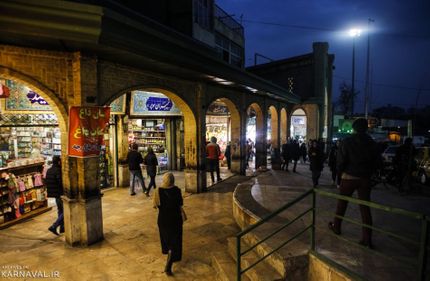
Introduction to Tajrish bazaar
Tajrish Covered Market is among the most renowned ancient markets and attractions of Tehran, especially delightful for evening strolls. Many domestic and international tourists include a visit to this market in their itinerary when traveling to the capital, considering it one of the most memorable spots in Tehran. Located in northern Tehran, in the Shemiranat district, it connects two historic neighborhoods, Sar-e Pol and Tajrish. Tajrish bazaar extends from Tajrish Square on one side to Qods Square and Tajrish Metro Station on the other, with the Imamzadeh Saleh shrine situated at the far end of this market.
Entrance to the Traditional Tajrish bazaar
Numerous visitors come to this market for leisurely walks and shopping, and as the day approaches its end, the hustle and bustle in this covered market intensifies. One of its notable features is its cleanliness and tidiness, presenting a very pleasant and clean environment regardless of the hour you step in. With around 400 shop fronts, Tajrish bazaar offers a wide range of options for purchasing desired items. From fresh and delicious foods to copperware, dried fruits, spices, pickles, and more, various goods are available for sale in Tajrish bazaar. Furthermore, a visit to Imamzadeh Saleh, Tajrish Tekyeh, Qaem Passage, and other attractions can be combined with a visit to Tajrish bazaar.
You can access Tajrish bazaar from the bus terminal side and a few steps from Tajrish Metro Station, and access is also possible through Qaem Passage. Additionally, part of this market leads to Imamzadeh Saleh.
Tajrish Traditional Bazaar
Tajrish bazaar (Tajrish Market) not only serves as a hub for trade and transactions but also stands as a cultural and social center. In fact, the amalgamation of the market, mosques, Imamzadeh (holy shrine), Tekyeh (religious congregation hall), and municipality in one neighborhood bears a resemblance to the heart of cities in Islamic culture. Following restoration and renovation, this market has acquired a significantly more beautiful appearance, evoking a smaller version of Tehran’s grand bazaar, with intricate tile work adorning shop fronts and showcasing the colorful architecture of traditional Iran.
In addition to its covered and sheltered section, the outdoor area of the market towards the bus terminal entrance has its own unique hustle and bustle, with tempting summer fruits displayed on large trays.
Where is Tajrish bazaar Located?
Tajrish bazaar is situated between Qods Square and Tajrish Square in the Shemiranat district of Tehran, accessible from both squares. To reach Tajrish bazaar, besides private cars, you can use the metro, taxis, and buses.
Metro: If you board the Tajrish-Kahrizak line and exit at the last station, Tajrish Station, you can experience both being at the deepest metro station in Tehran and being just a few steps away from the entrance to Tajrish bazaar.
Taxi: Many taxis ply routes from various points in Tehran to Qods Square and Tajrish Square, providing a convenient means to reach Tajrish bazaar.
Bus: BRT buses on the Railway-Tajrish route and the Resalat-Qods route are among the best options for reaching Tajrish bazaar.
Private Car: If you plan to drive to Tajrish bazaar, you can navigate your way through Valiasr, Shariati, Niavaran, and Zaferanieh streets to reach Qods Square or Tajrish Square. For parking, you can utilize parking lots near Tajrish bazaar and Tajrish Square.
Address of Tajrish bazaar : Tehran Province, Tehran, southwest side of Tajrish Square, next to the metro station, Tajrish bazaar.
What Days is Tajrish bazaar Open?
Tajrish bazaar is open every day of the week, including Fridays, from 9:00 AM to 10:00 PM.
History of Tajrish bazaar
The history of Tajrish bazaar is estimated to span 70 years, although its old merchants claim it dates back over 150 years. Nonetheless, structures like the renowned Tajrish Tekyeh, with a history of 220 years, suggest that this place is much older than commonly believed.
The history of Tajrish bazaar is closely tied to the growth and development of the Tajrish neighborhood. Initially, this neighborhood did not resemble its present form and was mostly composed of gardens, large summer houses, and villages. Nomads and people would flock to this pleasant climate in spring and summer. During this time, laborers from Taleshan, Lorestan, Nayin, Natanz, and other areas would come to work in the gardens of Tajrish, gradually settling there. After Reza Shah chose Darband as his summer residence, Tajrish experienced further growth and development. Consequently, the old Shemiran road to Tajrish Square was constructed, and bus and horse-drawn carriage stops were established.

With the growing traffic to Tajrish due to the region’s development, some Tehran residents set up stalls near Tajrish Tekyeh to sell fruits from the gardens of Tajrish, Azgol, Darabad, Farmanieh, and others. Among these stalls were commercial ventures that later rented shops for a monthly fee ranging from one to five tomans. With the prosperity of Tajrish bazaar, the number of shops and trades increased, ranging from dairy shops to butchers, grocers, fabric shops, blacksmiths, herbalists, and coffeehouses. Until over 50 years ago, the entire market was open-air, leading to its closure during cold seasons and heavy snowfall. Consequently, merchants decided to construct wooden roofs for the market and covered their shops with wooden beams, bricks, and tiles.
Iron and seamless roofs replaced the wooden and adobe roofs in 1973, which had been in place until just a few years ago. Ultimately, with the restoration of the market by the Cultural Heritage, Handicrafts, and Tourism Organization, it regained its traditional appearance, adorned its shops with traditional tilework plaques, and transformed into the Tajrish bazaar we see today.
Items at Tajrish bazaar
At Tajrish bazaar, you can find a diverse array of goods, as the saying goes, “from a needle to a man’s life.” In fact, from watch shops and bakeries to goldsmiths, electronics stores, fabric shops, imported dolls, prayer books, bags, shoes, electrical appliances, clothing, and more are busy at work in this place. Let’s take a look at some of them.
Handicrafts: Various types of handicrafts from all over Iran are available here, such as Yazd Termeh, Isfahan Khatam, Isfahan Enamelware, Hamedan Pottery, Kurdish Kilims, Isfahan Copperware, and more, which are among the most famous handicrafts.
Spices: One of the shops that truly delights your senses as you wander through Tajrish bazaar is the spice shops and herbalists, offering such a variety of colors and names that leave you bewildered about which to choose. These businesses are among the most thriving in the market, as many people purchase their needed spices from these places.
Dried Fruits and Nuts: In Tajrish bazaar, you can purchase high-quality dried fruits and nuts, including Damghan and Rafsanjan pistachios, Khorasan saffron, Isfahan sweets, and gaz, among others, which are available in numerous shops. The most popular souvenirs among foreign tourists are pistachios and saffron, without which their trip to Iran would not be complete.
Jewelry and Prayer Beads: To have a good memento of Tajrish bazaar, you can explore the offerings of prayer beads and jewelry.
Pickles: One of the delicious and appetizing sections that catches the eye is the renowned pickled vegetable shops, which offer a variety of sour and colorful products. Each time you encounter a new shape and name of pickles.
Tajrish Fruit Market
The scent of freshness and abundance of fruits and produce at Tajrish bazaar entices every visitor to marvel and even make purchases, especially rare fruits like Mexican blueberries and American avocados, which you may not have even heard of before, let alone seen elsewhere. Additionally, usually, any fruit that is out of season can be found at the Tajrish bazaar.
Varieties of Peppers and Vegetables at Tajrish Produce Market
Varieties of Vegetables at Tajrish Produce Market
Varieties of Peppers at Tajrish Produce Market
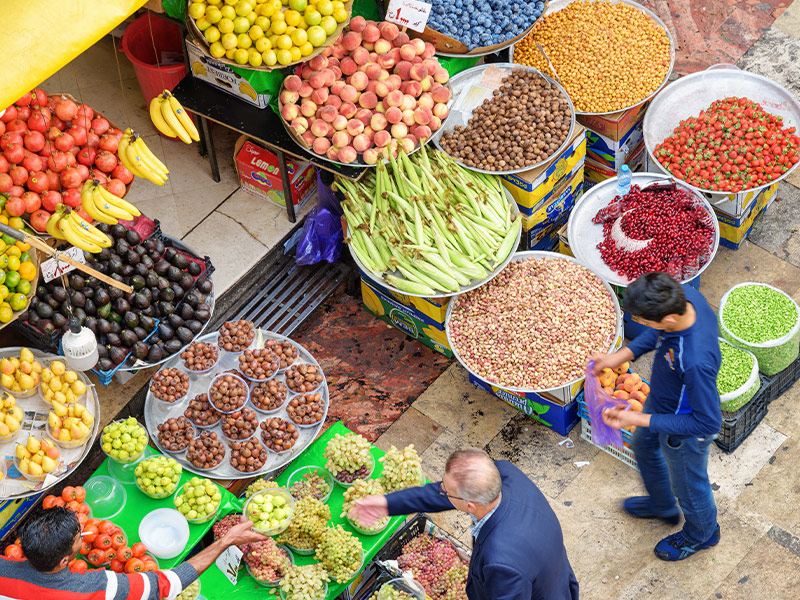
The fruits in this market, boasting the best quality among Tehran’s produce markets, are often meticulously cleaned and polished with wet wipes or special fruit wax to not only appear more appealing but also to enhance their shelf life. The vendors have arranged these fruits so tastefully that you’ll be tempted to buy some and try their flavor.
In the corners of Tajrish Fruit Market, there are also pickled vegetable shops, turning leaving this place empty-handed into the hardest thing imaginable.
Shopping Centers Near Tajrish bazaar
In addition to the numerous shops in the traditional and covered Tajrish bazaars, some of Tehran’s other shopping centers, such as Ghaem Passage, Alborz, and Basat, located near the Tajrish bazaar , specialize in selling various clothing, bags, shoes, cosmetics, handicrafts, perfumes, and more. Visiting these places will be enjoyable, although the items in these shopping centers may be more expensive than those in Tajrish bazaar.
Famous Mosques in Tajrish bazaar
There are three mosques located near Tekiyeh Tajrish in Tajrish bazaar. In ancient times, it was customary to build schools and mosques near markets, a tradition that also took place for the covered Tajrish bazaar The mosques of Sahib Al-Zaman or Khan Mosque, Seyyed Al-Shohada Mosque, and Azam Mosque provide visitors to the market with the opportunity to go to these mosques for prayer at the time of the call to prayer.
Dining Options in Tajrish bazaar
Several traditional restaurants, kebab shops, cafes, and fast-food outlets operate near Tajrish bazaar, providing good choices for refreshing and satisfying meals after exploring the market. Additionally, you can enjoy dishes like liver, soup, head and trotter stew, and haleem. During your culinary journey in the winter season, you will definitely come across shops selling turnips and peas, which are quite appetizing in the cold weather of this region. If you visit Tajrish in the hot summer season, fruit juice and ice cream can greatly uplift your spirits.
Imamzadeh Saleh (AS)
Imamzadeh Saleh (AS) is located near the covered Tajrish bazaar and is considered a spiritual center of this market. Many visitors to the market also visit Imamzadeh for worship and pilgrimage. Undoubtedly, the serene and spiritual atmosphere of Imamzadeh can uplift your soul and relieve your fatigue.
Imamzadeh Saleh (AS) is one of the descendants of Imam Musa al-Kadhim (AS). According to the inscriptions at this site, the original structure of Imamzadeh dates back to the year 700 AH (Hijri) and is so valuable that the building was listed as a national heritage of Iran in 1351 AH (Hijri). Hulagu Khan, the son of Fath-Ali Shah Qajar, restored this site in 1174 AH (Hijri). In the past, there was a plane tree courtyard in the middle of the Imamzadeh complex, which was removed during the renovation of the courtyard in the 1370s.
Historical documents indicate that this Imamzadeh lived in Ardabil. However, after his martyrdom, his blessed head was sent to the ruler of Rey, where Shia Muslims buried the blessed head of Imamzadeh Saleh (AS) in a village near Rey, which is the same location as today’s Tajrish Square.
Tekiyeh of Tajrish bazaar
At the end of Tajrish bazaar, there is a large area known as the fruit and vegetable square, where you can notice the signs of the large Tekiyeh of Tajrish. Originally built about 220 years ago during the Qajar era, the Tekiyeh of Tajrish is one of the oldest Tekiyehs in the capital city of Tehran. The Tekiyeh of Tajrish has close connections with the city’s symbols, serving as both part of Tajrish bazaar and a fruit market.
In the early 12th century AH (Hijri), gardeners and villagers of Tajrish decided to build a structure for mourning ceremonies for Seyyed al-Shohada (AS). Until then, people in this area gathered for mourning in mosques or hosted mourners in their homes. However, with the increasing population, they could not accommodate more people, so they decided to build the Tekiyeh.
Construction of the Tekiyeh, with an approximate area of 1100 square meters, was completed in 1176 AH (Hijri) and inaugurated. Initially, its inner courtyard was not covered, but later a roof was added to the central 600 square meter area. Magnificent mourning ceremonies were held here during the months of Muharram and Safar every year until the destructive flood of 1366 AH (Hijri) damaged parts of Tajrish, including this grand Tekiyeh. Although its alcoves and roof remained intact, the people restored and rebuilt this Tekiyeh.
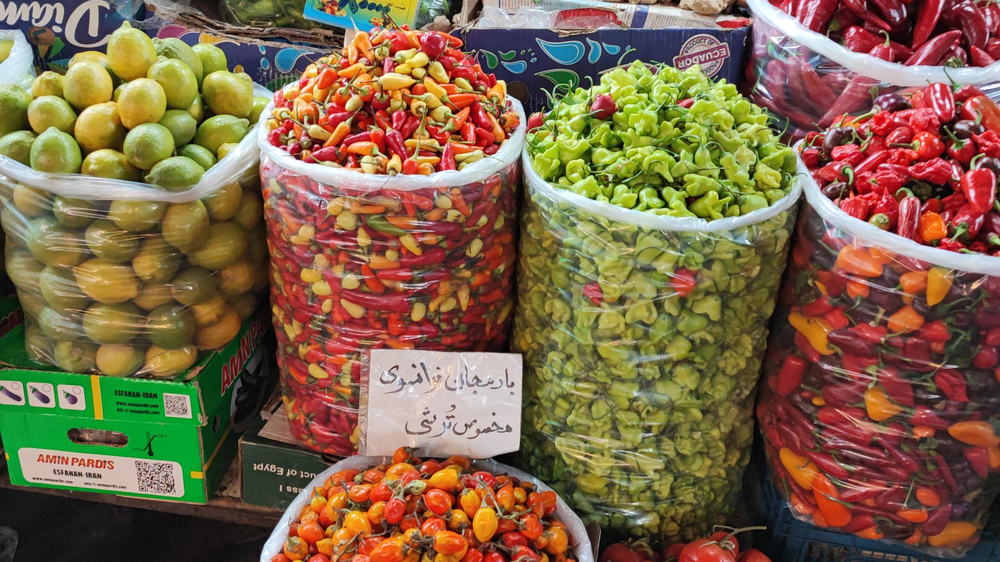
Tekiyeh of Tajrish bazaar
The Tekiyeh of Tajrish is a large polygonal courtyard with a central area designed for mourning ceremonies, which is carpeted during the days of Muharram. A two-story building also surrounds this Hussainiyya, which is used for commercial purposes on days other than the mourning ceremonies of Imam Hussein (AS).
In the western section of this Tekiyeh, there is a multi-door shop that is taller than other shops and is, in fact, a platform. Around the courtyard of the Tekiyeh, alcoves are seen, which are leased to shopkeepers for 11 months, and all the proceeds are used for Tekiyeh affairs.
The significance and value of the Tekiyeh of Tajrish are such that it was registered as a national heritage site of Iran on 25 Mehr 1383. Furthermore, magnificent mourning ceremonies are held at this Tekiyeh, which have been registered as spiritual heritage.
The Tekiyeh of Tajrish is one of the oldest mourning venues for Imam Hussein (AS) in the northern part of the capital city. Due to its location in the Tajrish bazaar and its proximity to Imamzadeh Saleh (AS), it has a significant impact on introducing the events of Ashura to foreign tourists.
Tekiyeh Payin of Tajrish
The Tekiyeh Payin is located next to the Grand Mosque of Tajrish and had a roof and 20 alcoves in the past until a sloping roof was added to it in the early 20th century. This Tekiyeh is located at the end of the coal merchants’ alley (Mahmoudi Street).
The shopkeepers of Tekiyeh Payin, according to an ancient tradition, stop working with the arrival of Muharram and prepare the field for mourning for Imam Hussein (AS) and bring the old Tekiyeh’s palm tree to the field for the palm tree procession. Although mourning ceremonies are not held in this place like in the past, the old residents of Tajrish still gather at the Tekiyeh to keep the mourning candles lit.
Sightseeing Spots Around Tajrish bazaar
Darband:
Located three kilometers from Tajrish bazaar, Darband is considered an ideal destination for recreation during the hot seasons due to its excellent weather. Many residents of the capital escape here from the hustle and bustle and pollution of the city because they can enjoy its beautiful scenery and taste delicious food to soothe their souls. Moreover, if you are interested in mountain climbing, you can enjoy the pleasant weather and scenic environment of Darband without leaving the city.
Saadabad Palace:
The Saadabad Historical and Cultural Complex is one of the most famous sites of contemporary history in Iran, which was used as the residence of the last kings of the Qajar and Pahlavi periods. Located at the foothills of Mount Tochal, this complex consists of 18 palaces, which have been repurposed after the Iranian Revolution, with many turned into museums and some allocated for administrative purposes or presidential institutions.
Niavaran Palace:
Niavaran Palace is one of Tehran’s attractions located in the pleasant climate of Shemiranat, occupying an 11-hectare garden. Before the revolution, Niavaran Palace was used as a summer residence for Mohammad Reza Shah Pahlavi’s family and was converted into a museum afterward. Access to this garden is possible via Bahonar Street (Niavaran), and Niavaran Park is located in the southern part of the palace.
Ferdows Garden:
Ferdows Garden, dating back to the Qajar and Mohammad Shah’s reign, has been registered as a national heritage site and was converted into the Iranian Cinema Museum in 2002. It comprises various sections such as the Pioneers Hall, the Contemporary Hall, the Notable Hall, the Children and Youth Cinema section, the Sacred Defense Cinema section, the Theater, the Sound and Dubbing section, Farhad’s House, and Ali Hatami’s Room.
If you’ve had an experience visiting Tajrish bazaar, share it with Gulf City Pedia and our readers.

Frequently Asked Questions:
Where is Tajrish bazaar located?
Tajrish bazaar is located in the Shemiranat district of Tehran, between Tajrish Square and Quds Square.
What are the characteristics of Tajrish Fruit Market?
The most prominent feature of Tajrish Fruit Market is the sale of rare fruits that you may have never seen before. Additionally, fruits that are out of season and likely unavailable anywhere else in the capital are sold in this market.
What days is Tajrish bazaar open?
Tajrish bazaar is open every day, including Fridays.
How can we get to Tajrish bazaar?
Access to Tajrish bazaar is possible via metro, private car, bus, and taxi, although due to perennial congestion and traffic in the area, it’s better to use public transportation such as the metro to reach Tajrish bazaar

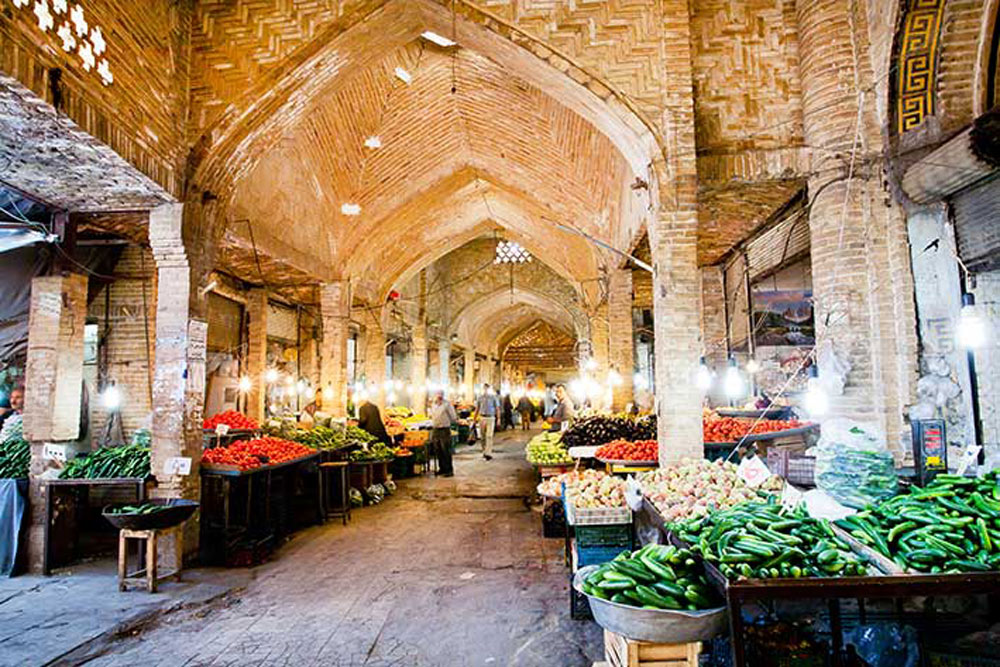

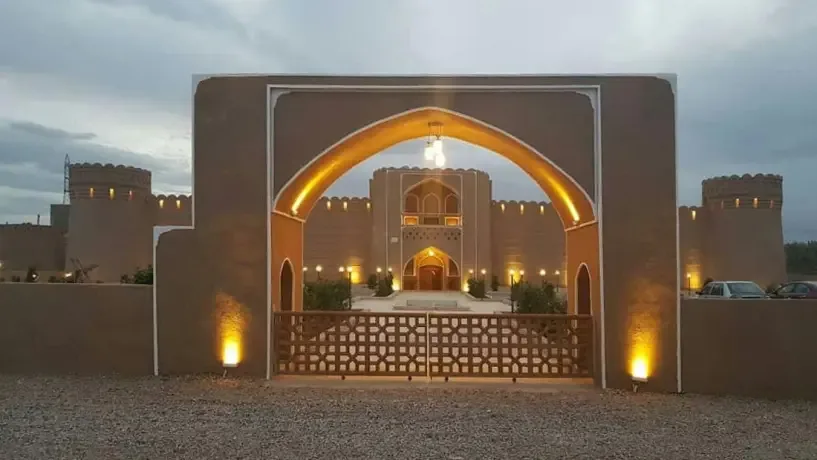
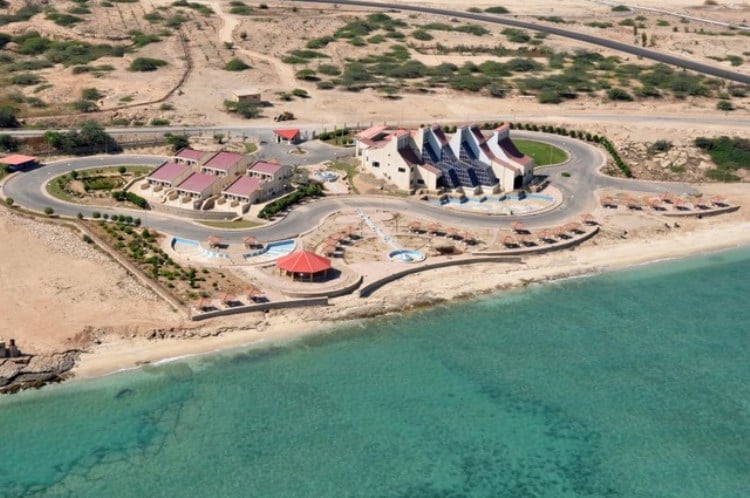

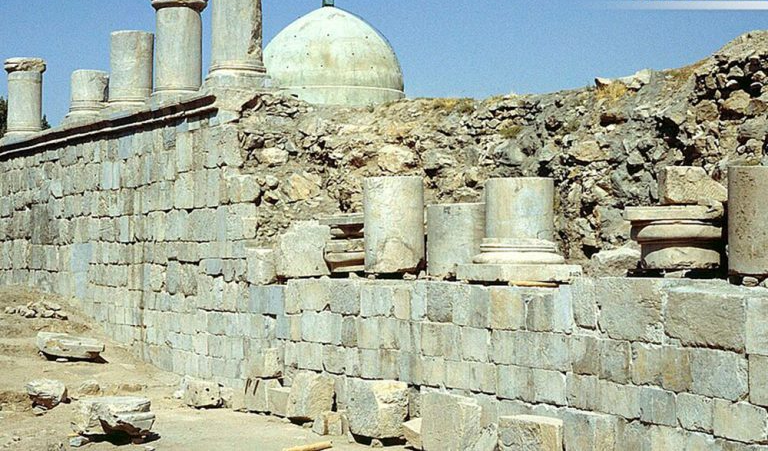
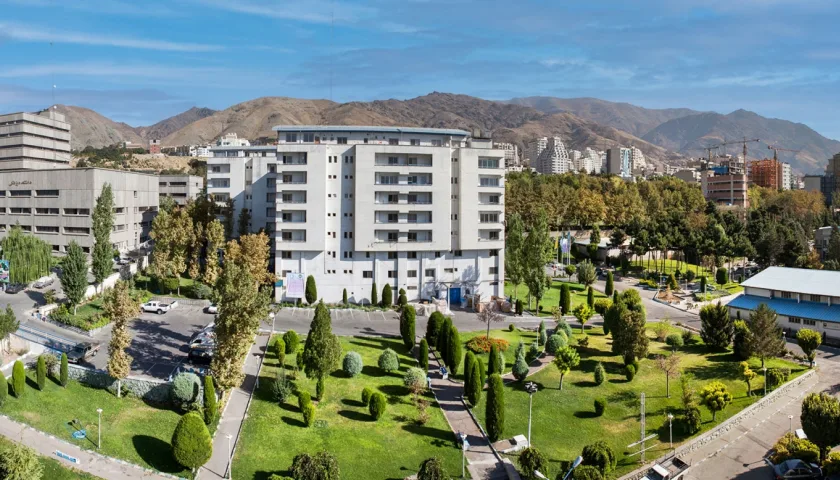

There’s certainly a great deal to know about this subject.
I really like all the points you’ve made.